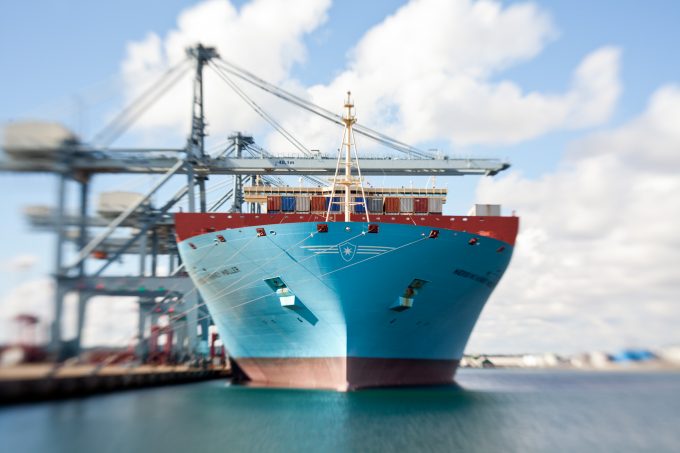Urgent call for breakdown of cargo onboard as General Average declared on Dali
Singapore-based Grace Ocean has officially declared General Average on its vessel, the Maersk-chartered and operated ...

In better news for ocean carriers, there seems to be emerging evidence that mid- and longer-term contract rates are firming up, post-Hanjin.
The Shanghai Containerized Freight Index (SCFI) did not publish today, due to the Chinese Golden Week national holiday, resulting in a temporary pause in visible spot rate volatility.
In the past two weeks, the Shanghai-Europe legs of SCFI gave back all of the 30-40% gains that followed Hanjin Shipping’s collapse on 31 August, to drive spot rates back down to $699 per teu for North Europe and $583 per teu for Mediterranean ports.
In response, several carriers announced general and FAK rate increases for this month, OOCL quoting Asia to Europe going up $800 per teu from 17 October.
Meanwhile, data from the much broader China Containerized Freight Index (CCFI), which is based on containers leaving its major ports and is a composite of spot and contract rates, remained positive during September for Europe, ticking up slightly again last week, in what may prove to be some light at the end of the tunnel for beleaguered carriers.
Average freight rates fell 20-25% year-on-year in the first six months of this year, which carriers must claw back if the liner industry is to return to sustainability, according to a recent Alphaliner analysis.
Maersk Line was at the top end of the rate decline scale, with its average rate per teu tanking by a massive 25% on the first six months of 2015, to $891 per teu, and explained the carrier’s reversal of fortunes from a $1.2bn profit in the first half of 2015 to $114m loss this year.
The traditional fourth-quarter Asia-Europe annual contract negotiations between shippers and container lines last year were clouded by the spectre of declining spot rates, and obliged carriers to either agree new contracts at much reduced rates or rely more heavily on spot cargo to fill their ships.
Many opted for the latter, which resulted in a considerable shift of volumes onto the spot market and increased carrier exposure to rate volatility and the negative drag on average freight rates.
Carriers serving the transpacific trade also suffered the impact of soft spot rates during their annual rate negotiations in April and May, which impinged on their ability to obtain satisfactory rates.
Despite the continuing structural overcapacity across many routes – which suggests that not much will have changed for carriers going into the next round of contract discussions with shippers – some that believe that the Hanjin collapse will prove a watershed for the industry in restoring rates to sustainable levels.
This is the view of ocean freight rate benchmarking platform Xeneta’s chief executive Patrik Berglund.
Mr Berglund said that “it is a changed market” post-Hanjin and that carriers would not be “so accommodating” as hitherto, while shippers themselves were increasingly wary of pushing their ocean transport suppliers to the brink of collapse.
He said: “This [Hanjin collapse] will be a wake-up call for the large-volume shippers which have maybe become accustomed to basking in long-term contracts at low rates.”
Comment on this article